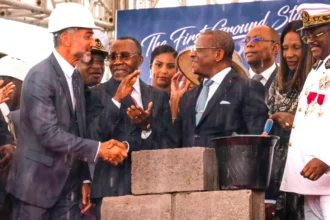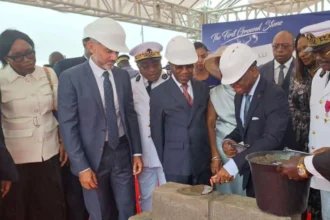Africa holds some of the world’s most significant reserves of strategic minerals. These resources, essential for steelmaking, batteries, and the energy transition, place the continent at the center of a global competition between China, Europe, and the United States. Yet local value creation remains a challenge, hindered by inadequate infrastructure and tough negotiations with investors. In Guinea, the Simandou deposit is considered one of the world’s largest iron ore projects, with reserves estimated at 1.5 billion tonnes for the blocks operated by Rio Tinto (Rio Tinto, Simandou). According to S&P Global, Rio Tinto is developing blocks 3 and 4 through the joint venture Rio Tinto SimFer with the Guinean government, while the remaining blocks (1 and 2) are operated by the Winning Consortium Simandou (WCS). Together, these two sites are expected to produce 60 million tonnes of ore in the first year of operation, rising to 120 million tonnes in the second year.
Cobalt : The Democratic Republic of Congo, the global gatekeeper
The Democratic Republic of Congo (DRC) holds a near-monopoly on cobalt, essential for lithium-ion batteries. In 2024, the country accounted for 76% of global production according to the United States Geological Survey (USGS, 2024). This dominance makes Kinshasa a key player in the global value chain. According to the 2024 mining statistics bulletin from the Technical Coordination and Mining Planning Unit (CTCPM) of the Congolese Ministry of Mines, published in January 2025, the DRC’s contained cobalt metal production reached 198,844 tonnes in 2024. This figure, up from 170,000 tonnes in 2023, confirms the DRC’s position as the world’s leading cobalt producer. While the USGS reported a slightly higher figure of 220,000 tonnes in its January 2025 report, the DRC remains far ahead of Indonesia (28,000 tonnes), Russia (8,700 tonnes), Canada (4,500 tonnes), and the Philippines (3,800 tonnes). However, this dominance also generates tensions. In 2025, the Congolese government announced stricter export policies, temporarily suspending and then reintroducing cobalt quotas to protect domestic interests and increase local revenue. This decision immediately raised concerns on the markets, where Chinese and European refiners are heavily reliant on Congolese cobalt.
Lithium : Zimbabwe, the ambitious newcomer
While the DRC dominates cobalt, Zimbabwe is emerging as a rising star in lithium production. In 2024, the country produced 22,000 tonnes, marking a sharp increase according to USGS. The Arcadia mine, one of Zimbabwe’s flagship projects, produced about 128,000 tonnes of spodumene in the first quarter of 2025, reflecting rapid local capacity growth (Mining Zimbabwe, 2025). This growth occurs amid a global surge in demand for lithium-ion batteries. The International Energy Agency (IEA) forecasts continued growth driven by the energy transition and electric vehicle sales (IEA, 2024). Yet industrial transformation remains concentrated in Asia, depriving Africa of a significant share of value addition.
The investor battle : China in the lead, the west responds
According to the China-Africa Cooperation Reports, foreign investments are multiplying in response to these riches. China remains the dominant player, injecting billions of dollars into African mines in recent years. Chinese companies secure long-term supply contracts, sometimes coupled with financing for infrastructure. Western majors like Rio Tinto, Glencore, and Vale are also active, safeguarding their market shares, particularly in Simandou. This rivalry creates an opportunity for African governments to leverage competition to negotiate better terms: local content, technology transfer, job creation, and infrastructure development.
Strategic challenges for Africa
Beyond extraction, the real challenge lies in local value creation. Without strong policies to develop refining, metallurgy, and battery manufacturing, Africa will remain a raw material supplier. The experiences of Mbalam-Nabeba and Simandou show that without adequate infrastructure, projects struggle to take off despite massive reserves (Project documents Mbalam, S&P Global). African states must secure stable regulatory frameworks, attract sustainable financing, and enforce traceability standards. Diversifying partnerships China, India, Europe, and the United States is also essential to avoid over-reliance on a single market.
















